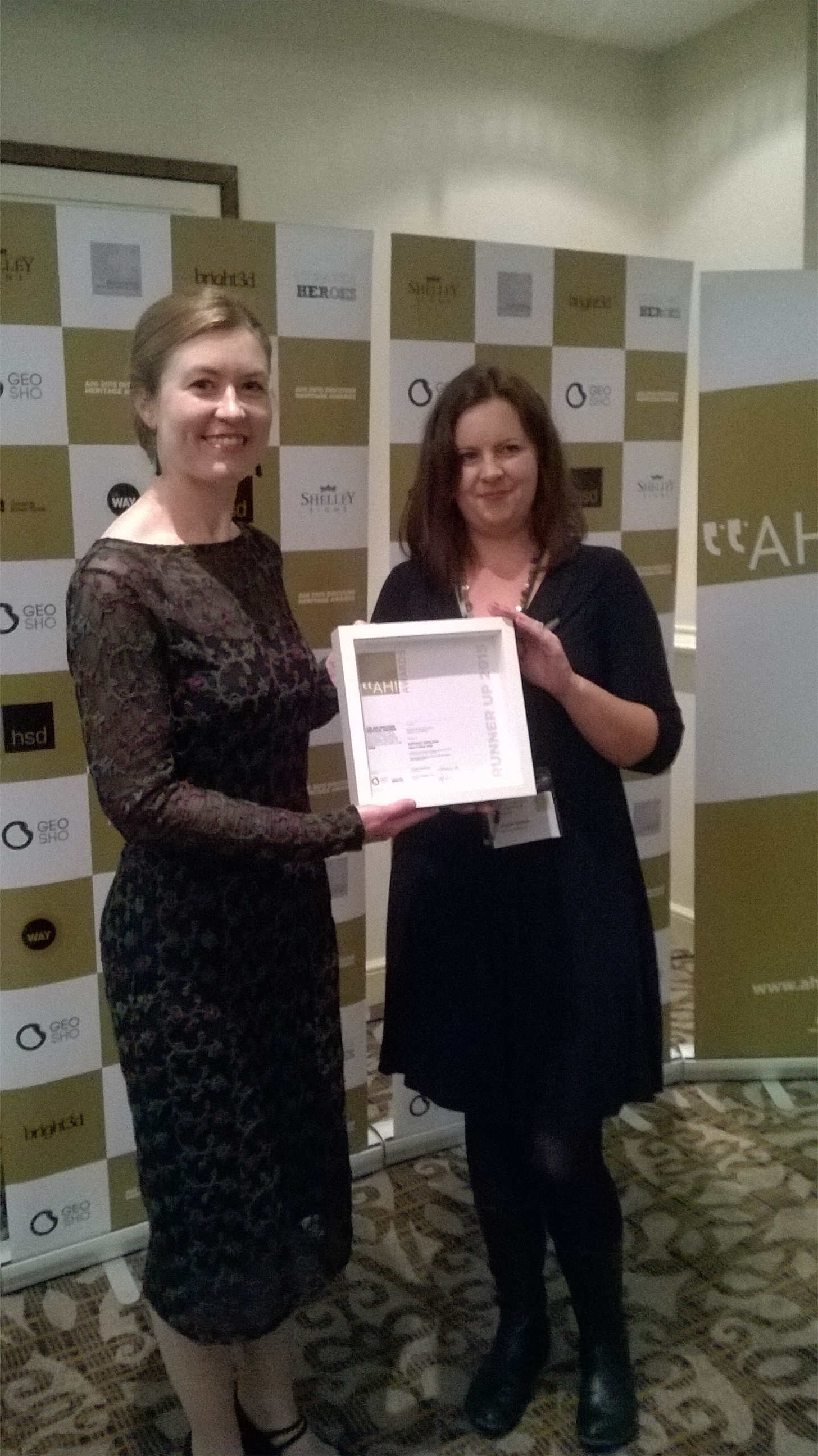
Last night, the Iona II Dive Trail was honoured at the Association for Heritage Interpretation 2015 Awards. The 19th century paddle steamer Iona II is a protected wreck lying off the east coast of Lundy Island in the Bristol Channel where she foundered after setting sail to assist in the American Civil War.
The project was awarded ‘Runner Up with Special Mention from the Judging Panel’ in the Interpretation for a Target Audience category. There was stiff competition in this category and the other shortlisted project was Light Fever, at Fort Nelson in Portsmouth, which teaches autistic young people to express themselves through recorded light graffiti. The category was won by the Roman Medicine Roadshow which uses ancient medicine and health as a talking point for current issues more relevant for their target audience of young people from socio-economically deprived areas.
Congratulations must go to the many people that contributed to the Iona II Dive Trail. It would not have been a success without the input of the diving community and charter boat operators, many of whom are very familiar with the wreck. Thanks go in particular to the divers from Ilfracombe and North Devon Sub-Aqua Club, Severnside Sub Aqua Club and Bristol Channel Divers, who tested the dive trail. Divers from Potters Bar Sub Aqua Club and Appledore Sub-Aqua club also contributed their ideas and photographs. Local charter operators, Clovelly Charters, Lundy Charters and Lundy Diving are thanked for their advice and assistance with running the test dives.
The contributions and assistance of Beccy MacDonald, the Lundy Warden, and Derek Green, Lundy Manager at Landmark Trust, are gratefully acknowledged. Thanks are also extended to Robert Irving and Keith Hiscock for providing information and images of the beautiful local marine life, to Alan Mildren of Marine Vision Studios for his brilliant short film about the dive trail, to the following groups who also assisted with the project: Lundy Field Society, Marine Conservation Society, McLean Museum and Art Gallery, Natural England, Seasearch and InHouse Encapsulation; and not least to the staff at Historic England for commissioning the dive trail on this protected wreck.
The Wessex Archaeology drawing office did an amazing job on the interpretation materials design work, and Victoria Cooper, formerly of Wessex Archaeology, kept everything on the straight and narrow managing the project.
Due to the enthusiasm and generosity of all the people and organisations above, I had an enjoyable job of putting together their ideas, information and images into the multi-layered and participatory interpretation scheme that is the commended Iona II Dive Trail. Now there is even more reason to dive this protected wreck next dive season!
Peta Knott, Marine Archaeologist